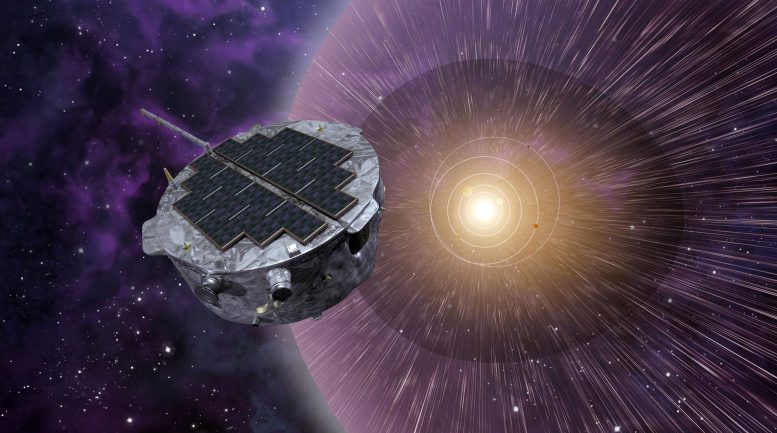
Artist’s impression of the Interstellar Mapping and Acceleration Probe (IMAP). The mission will help us better understand the flow of particles from the Sun called the solar wind — and how those particles interact with space within the solar system and beyond. Credit: NASA/Johns Hopkins APL/Princeton University/Steve Gribben
IMAP-Ultra captures crucial data on neutral atoms traveling from the edge of our solar system, aiding in the understanding of interstellar and solar wind interactions.
Another of the instruments planned for flight aboard NASA’s Interstellar Mapping and Acceleration Probe (IMAP) is ready for installation on the spacecraft.
IMAP-Ultra is a particle imager capable of capturing energetic neutral atoms (ENAs), particularly hydrogen atoms, and is the third instrument to be delivered for integration. Engineers will now perform a series of tests to ensure Ultra can properly communicate with the spacecraft before it is fully integrated into the IMAP structure and into the onboard electronics system.
The IMAP-Ultra 45 instrument after integration and prior to calibration. Credit: NASA/Johns Hopkins APL/Princeton
IMAP-Ultra is one of three imagers on IMAP that capture ENAs traveling from the boundary of our solar system. When charged particles from the solar wind reach our outer heliosphere, they interact with interstellar neutral particles and transform into ENAs. ENAs still retain information about the original charged particles, but losing their charge allows them to travel through space unbounded by the Sun’s magnetic field and eventually reach IMAP. The three imagers will capture data on ENAs at varying energy levels.
IMAP-Ultra also features unique gold-plated blades that deflect charged particles, allowing only neutral atoms to reach the instrument’s sensor.
Tamlyn Franklin, vibration technician; Mark LeBlanc, Ultra systems assurance manager; Alexandra Dupont, Ultra lead engineer; Cody Huber, Ultra mechanical engineer; and Chris Gingrich, Ultra mechanical engineer, prepare the Ultra instrument for vibration testing at Johns Hopkins APL.
Princeton University professor David J. McComas leads the IMAP mission with an international team of 25 partner institutions. The Johns Hopkins Applied Physics Laboratory in Laurel, Maryland, builds the spacecraft and operates the mission. IMAP is the fifth mission in NASA’s Solar Terrestrial Probes (STP) program portfolio. The Explorers and Heliophysics Project Division at NASA’s Goddard Space Flight Center in Greenbelt, Maryland, manages the STP Program for the agency’s Heliophysics Division of NASA’s Science Mission Directorate.
>>> Read full article>>>
Copyright for syndicated content belongs to the linked Source : SciTechDaily – https://scitechdaily.com/advanced-particle-imager-ready-for-installation-on-nasas-imap-spacecraft/